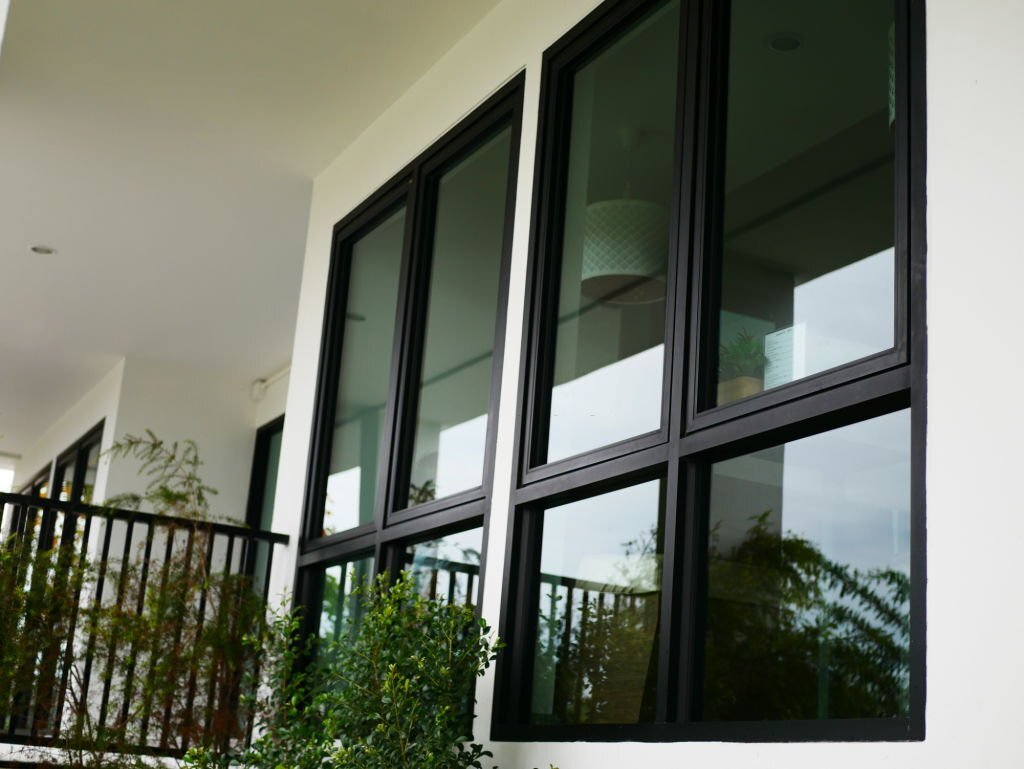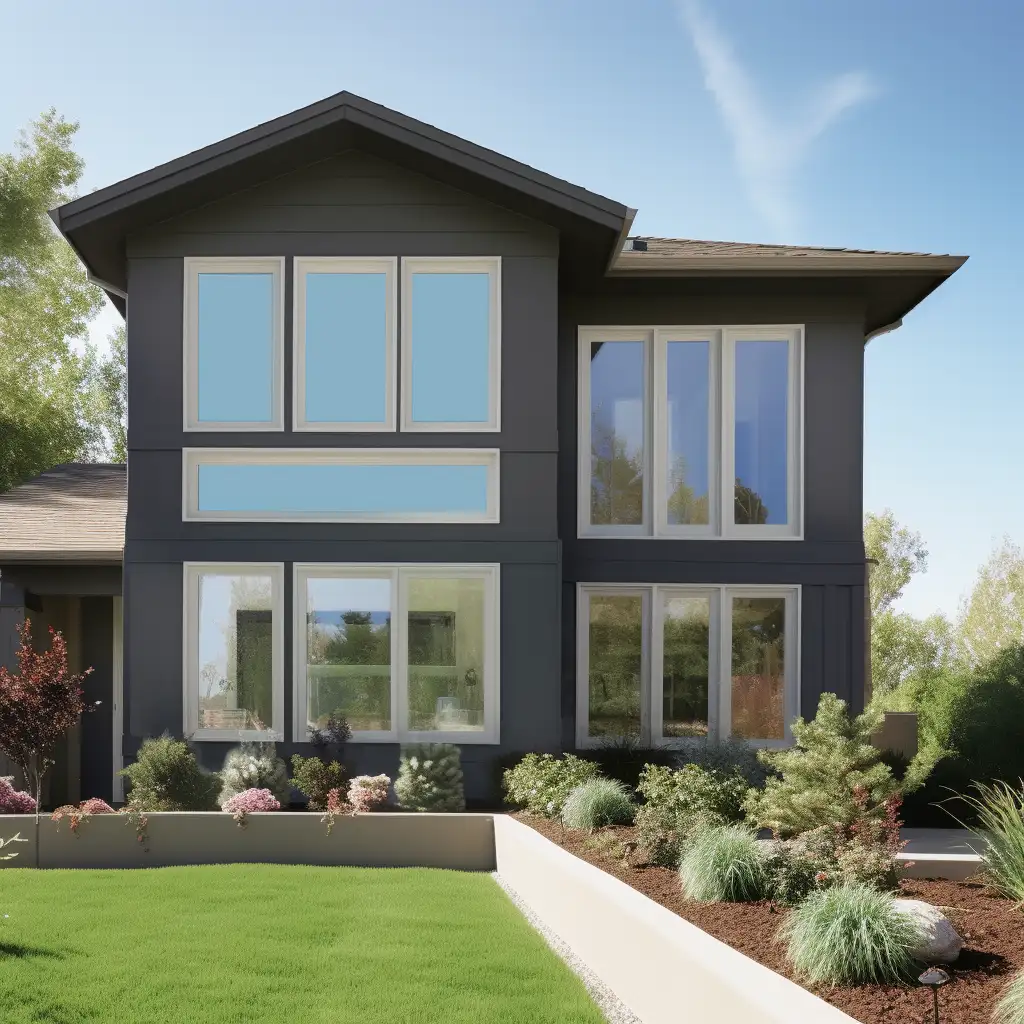Exactly How Residential Window Tinting Enhances Your Home's Power Efficiency
Residential home window tinting presents an engaging remedy for homeowners looking for to boost energy efficiency within their living spaces. By using specialized movies to windows, it effectively decreases warmth transfer, thus stabilizing indoor temperatures and reducing the requirement for too much heating or cooling.
Comprehending Window Tinting
Recognizing home window tinting is necessary for homeowners seeking to boost both comfort and energy effectiveness in their living areas. Residential Window Tint. Window tinting involves the application of a thin movie to the interior or exterior surface area of glass windows. This movie can dramatically modulate the amount of sunshine and heat that goes into a home, thus affecting indoor climate problems
There are numerous sorts of window tinting films available, each with unique residential properties. Dyed films take in solar power, while reflective films disperse it away from the glass surface area. Ceramic films use an equilibrium of visibility and warmth denial, making them a preferred choice amongst house owners. The efficiency of home window tinting is typically measured by its Visible Light Transmission (VLT) percent, which suggests just how much light can go through the movie.
Advantages of Power Effectiveness
Home window tinting not just enhances visual appeals but likewise plays a significant role in boosting energy performance within residential areas. By lowering heat transfer via home windows, tinted films create a much more stable interior climate, which can cause significant decreases in energy consumption for cooling and heating. This power efficiency equates right into reduced utility bills, offering property owners with substantial long-term cost savings.

Furthermore, window tinting improves the convenience of living rooms. By lessening glare and blocking dangerous UV rays, tinted windows produce a more enjoyable environment, which can cause enhanced well-being for occupants. The security versus UV rays likewise aids maintain furnishings and floor covering from fading, contributing to the durability of household things.
Exactly How Tinting Functions
Tinting films run through a mix of innovative products and technologies developed to manage the quantity of solar power getting in a home. Mainly composed of polyester, these films usually integrate metal or ceramic fragments that soak up and reflect warm. This double ability permits them to considerably lower the infiltration of ultraviolet (UV) rays and infrared radiation while permitting visible light to travel through.
The efficiency of window tinting is determined by its solar warmth gain coefficient (SHGC), which suggests just how much solar energy is transmitted with the window. Reduced SHGC values are preferable as they signify higher warmth rejection. Additionally, home window tints can include a selection of shades, enabling homeowners to personalize their visual preferences while improving power efficiency.
Additionally, these movies function as an obstacle, stopping warmth loss during cooler months by showing indoor warmth back right into the space. This thermal insulation effect matches the cooling benefits gotten throughout warmer months, adding to a well balanced read what he said interior environment year-round. By taking care of solar power effectively, domestic window tinting not only enhances comfort but also plays an important role in lowering power intake and decreasing energy costs.
Selecting the Right Color

There are numerous kinds of window movies available, consisting of colored, metalized, and ceramic. Dyed films are economical but may have restricted durability. Metalized films supply better warm denial yet can hinder digital signals. Ceramic movies provide outstanding warm control without endangering visibility and are extremely read long lasting, making them a preferred choice.
Noticeable light transmission (VLT) is one more critical factor, as it indicates the amount of natural light that can pass through the tinted glass. Property owners ought to choose a tint with a VLT that matches their illumination preferences while still offering sufficient glare reduction.
Additionally, assessing the solar heat gain coefficient (SHGC) can help determine how well a color can obstruct warm from sunlight. A lower SHGC indicates better warmth control, inevitably boosting power effectiveness.
Installation and Upkeep Tips
Appropriate installation and upkeep are vital elements in making the most of the advantages of residential home window tinting. Experts additionally utilize specialized methods and devices, which can enhance the toughness and effectiveness of the tint.
Adhering to installment, maintenance is important to extend the life of the home window movie. It is advised to wait at least 30 days before cleaning the tinted windows to enable the sticky to treat totally.
In addition, normal inspections are advantageous. Look for any type of peeling or bubbling, which might suggest inappropriate installment or put on with time - Residential Window Tint. Addressing these issues promptly can prevent further damage and maintain power performance. By sticking to these installment and upkeep ideas, house owners can guarantee their window tinting remains to offer substantial power savings and convenience for years to come.
Final Thought
In final thought, household home window tinting functions as an effective remedy for improving power performance within homes. By decreasing heat transfer and obstructing damaging UV rays, window movies contribute to decrease energy consumption and enhanced indoor convenience. The selection of ideal tinting materials, along with appropriate installation and upkeep, even more takes full advantage of these advantages. Eventually, home window tinting represents a lasting investment that not just reduces energy bills yet also advertises a comfortable living atmosphere throughout the year.
Window tinting includes the application of a slim movie to the interior or exterior surface area of glass home windows. By reducing warm transfer with home windows, colored films produce a much more secure indoor climate, which can lead to considerable decreases in power usage for home heating and air conditioning.The performance of window tinting is determined by its solar heat gain coefficient (SHGC), which indicates exactly how much solar power is sent through the window. By managing solar energy successfully, household home window tinting not only enhances comfort but likewise plays a crucial view website duty in lowering power intake and lowering utility bills.
By lowering warm transfer and blocking dangerous UV rays, home window movies contribute to reduce energy usage and enhanced indoor comfort.